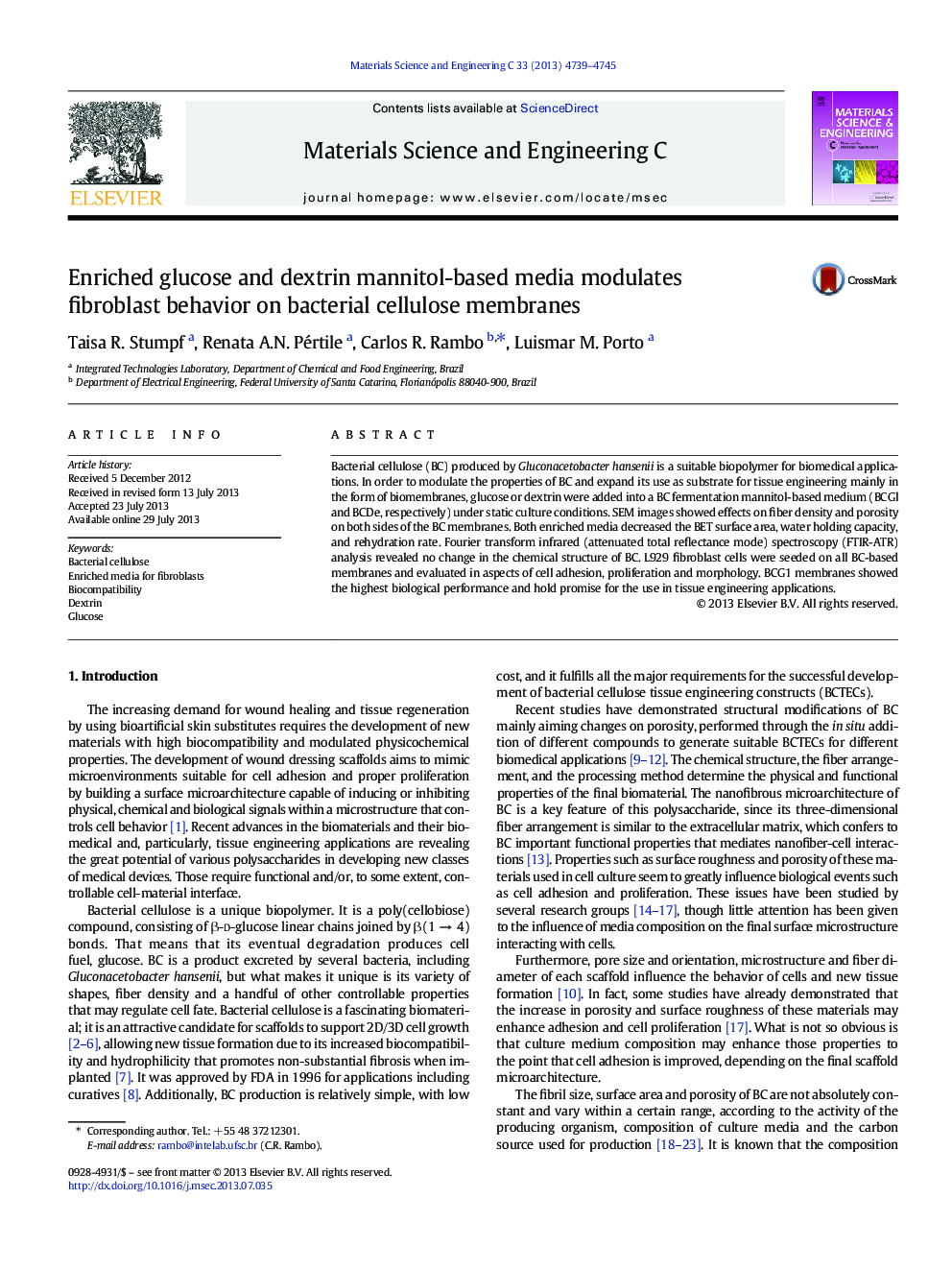| Article ID | Journal | Published Year | Pages | File Type |
|---|---|---|---|---|
| 1429496 | Materials Science and Engineering: C | 2013 | 7 Pages |
•Glucose and dextrin were used to modify culture media for BC production.•Microarchitecture of BC was different depending on the enriching agent.•Fibroblasts adhered on the surface of BC modified microarchitectures.•Fibroblasts adhered on glucose modified BC exhibited healthy cell morphology.
Bacterial cellulose (BC) produced by Gluconacetobacter hansenii is a suitable biopolymer for biomedical applications. In order to modulate the properties of BC and expand its use as substrate for tissue engineering mainly in the form of biomembranes, glucose or dextrin were added into a BC fermentation mannitol-based medium (BCGl and BCDe, respectively) under static culture conditions. SEM images showed effects on fiber density and porosity on both sides of the BC membranes. Both enriched media decreased the BET surface area, water holding capacity, and rehydration rate. Fourier transform infrared (attenuated total reflectance mode) spectroscopy (FTIR-ATR) analysis revealed no change in the chemical structure of BC. L929 fibroblast cells were seeded on all BC-based membranes and evaluated in aspects of cell adhesion, proliferation and morphology. BCG1 membranes showed the highest biological performance and hold promise for the use in tissue engineering applications.
